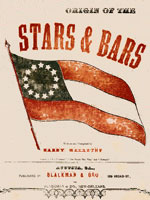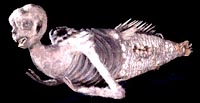Confederate Memorial State Historic Site [MO]
The Civil War may have ended in 1865, but vivid memories of the "Lost Cause" lived on for decades at the Confederate Soldiers Home of Missouri. Opened in 1891, the Confederate Home provided refuge to more than 1,600 veterans and their families for nearly 60 years. These veterans hailed from points throughout the South and served in every major battle of the Civil War. Foot soldiers, artillery and cavalrymen, marines, guerilla fighters, and even spies found a place of rest here in their old age. The very last of these former rebel soldiers, John T. Graves, died at the home in 1950 at the age of 108, thus bringing an end to an era in Missouri history. Today, visitors to the Confederate Memorial State Historic Site can venture to the locations of the former home buildings and stroll through the restored 106-year-old chapel and historic cemetery. Three other historic buildings can be viewed from outside. Interpretive exhibits tell the story of the state's Confederate Soldiers Home.
The site offers exhibits and tours.


